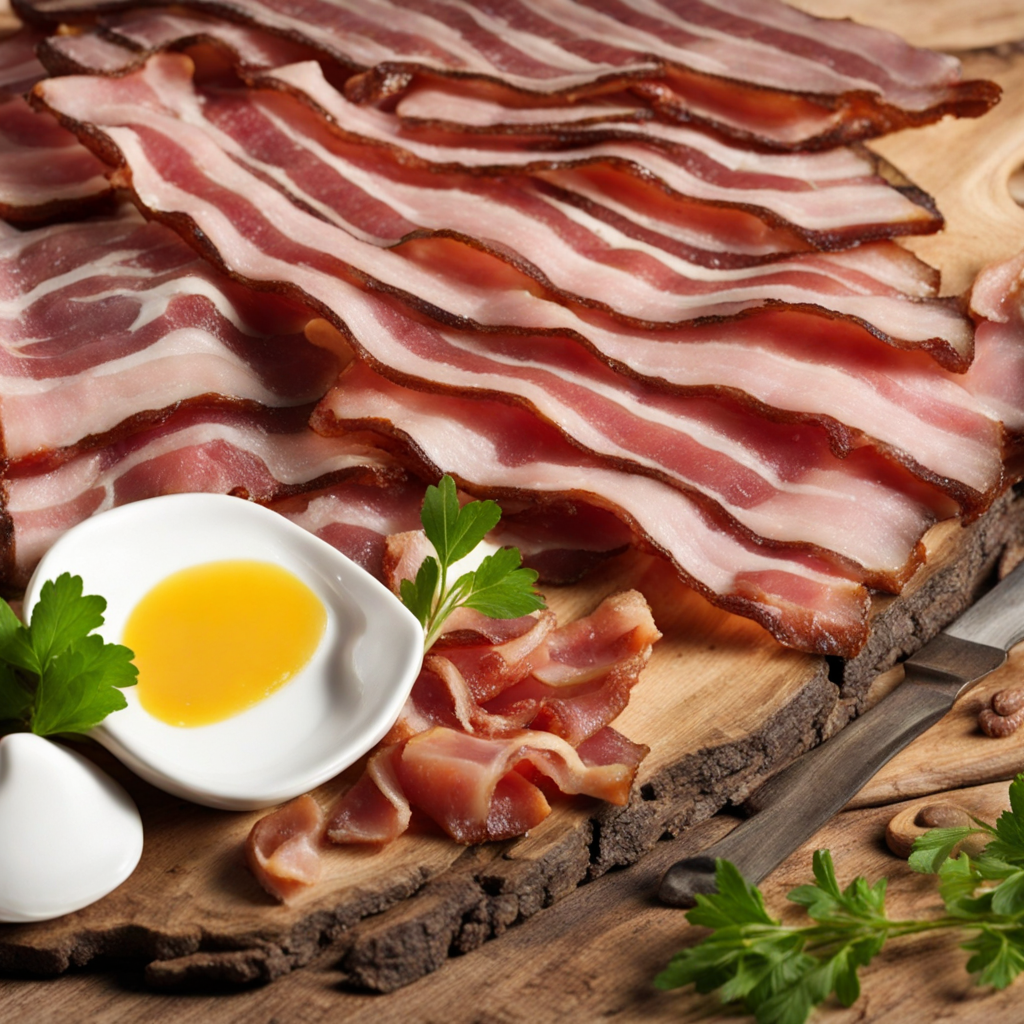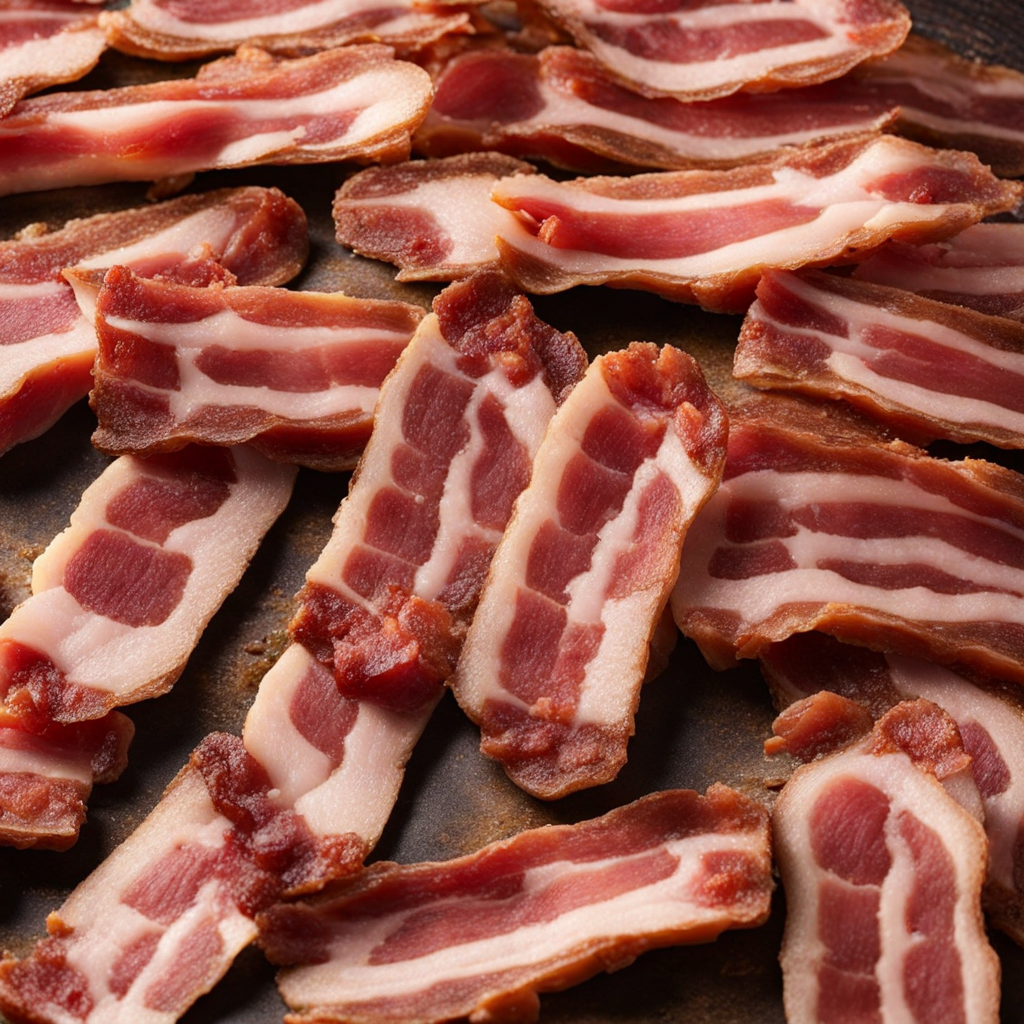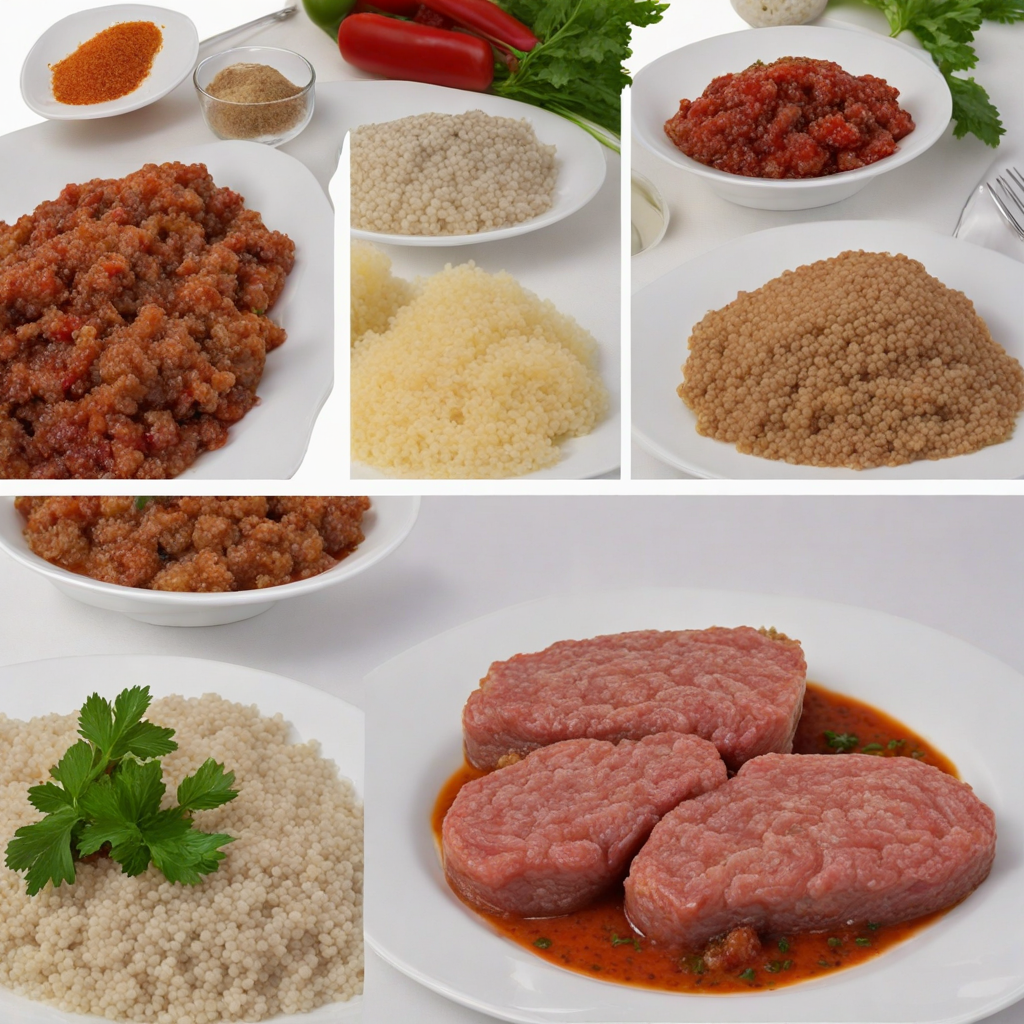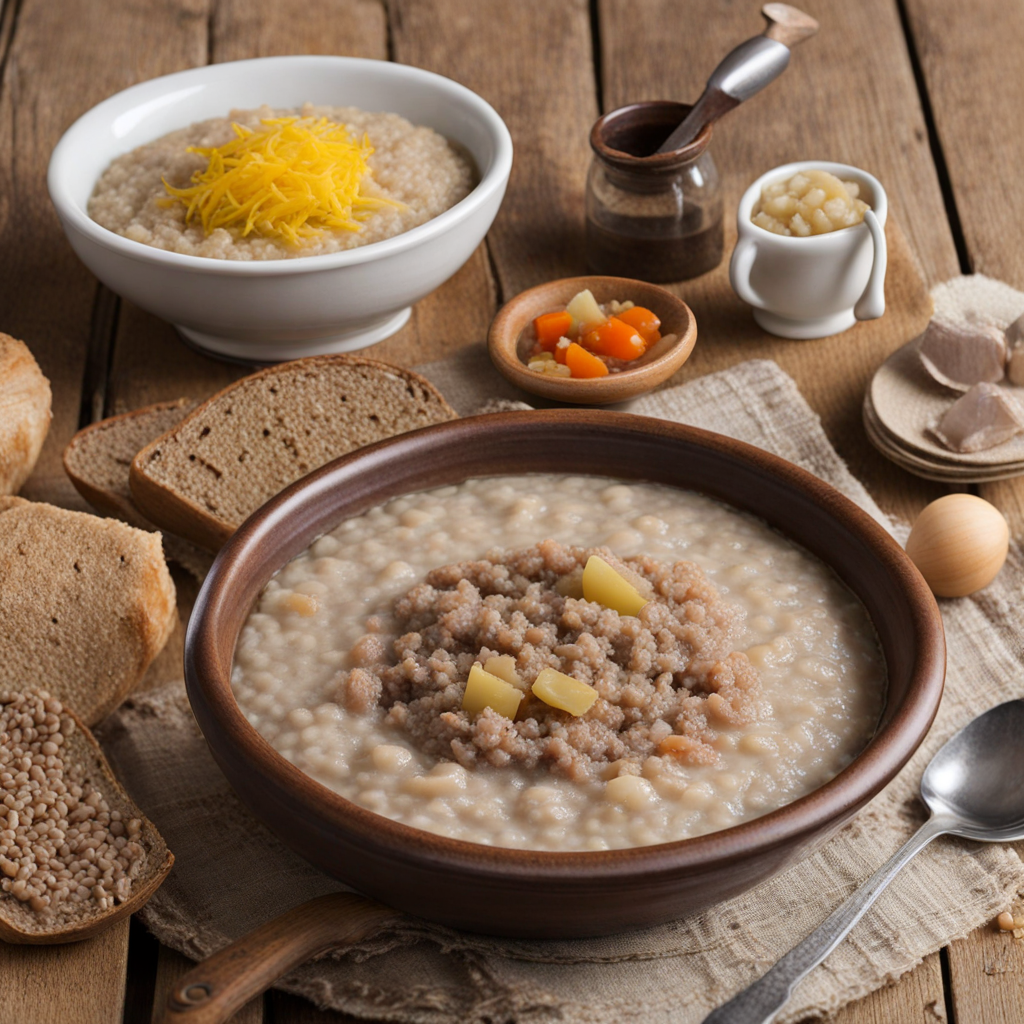Surspeck
Surspeck is a unique culinary delight hailing from Austria, specifically known for its rich heritage in charcuterie. This traditional cured meat is made from pork, particularly the belly or the back, which is seasoned with a blend of spices, including salt, garlic, and sometimes a hint of juniper berries. The meat is then air-dried, allowing it to develop a deep, savory flavor that is both robust and nuanced. The result is a delicately marbled product that showcases the quality of the pork and the craftsmanship of the curing process.
How It Became This Dish
The Fascinating History of Surspeck: Austria’s Cured Pork Delight Origins: A Culinary Tradition Rooted in Necessity Surspeck, a traditional Austrian cured pork delicacy, possesses a rich history that intertwines with the cultural and agricultural practices of the Alpine region. The term “Surspeck” itself derives from the German words “sauer” (sour) and “Speck” (bacon), highlighting its unique preparation method, which involves curing pork with a combination of salt, spices, and sometimes a souring agent. This practice of preserving meat dates back to ancient times when people relied on curing as a means of survival through the harsh winters. The origins of Surspeck can be traced back centuries, to the pastoral communities in the mountainous regions of Austria. Here, farmers raised pigs, which were often fed on scraps from the household, making them a vital source of nourishment. The end of the pig-farming season typically coincided with the autumn harvest, when families would slaughter their pigs, ensuring that the meat would last through the cold months ahead. The process of curing pork was not only practical but also a way to enhance flavors and create a product that could be stored for extended periods. Cultural Significance: A Festive Treat and Symbol of Hospitality Surspeck is more than just a food item in Austria; it carries significant cultural importance. Traditionally, this cured meat was associated with festive occasions and communal gatherings. In the Tyrolean and Styrian regions, Surspeck is often served during celebrations, family reunions, and local fairs, symbolizing hospitality and the abundance of rural life. The preparation of Surspeck is a communal activity, often involving family and friends. This aspect of its production embodies the spirit of togetherness and cooperation that is central to Austrian culture. Families would come together to cure their meats, passing down recipes and techniques through generations, which fostered a strong sense of community and cultural identity. Today, Surspeck continues to be a beloved staple in Austrian cuisine, often enjoyed as part of a hearty breakfast or as a savory snack with bread and cheese. Development Over Time: From Rural Tradition to Gourmet Delicacy As Austria evolved through the ages, so too did the methods and presentation of Surspeck. Initially a humble food preserved for sustenance, it gradually began to gain recognition in culinary circles. The 19th century marked a turning point for Surspeck, as the rise of the Austro-Hungarian Empire facilitated greater trade and cultural exchange. This blossoming of gastronomy in Austria allowed local specialties, including Surspeck, to gain prominence beyond their regional origins. By the early 20th century, Surspeck was being celebrated not only for its flavor but also for its artisanal production methods. Butchers began to refine their techniques, experimenting with various spice blends that included garlic, pepper, and juniper berries, which enhanced the flavor profile of the cured meat. The emphasis on quality ingredients and traditional methods turned Surspeck into a sought-after delicacy, appealing to both locals and tourists alike. In contemporary Austria, Surspeck is often featured in gourmet food markets and celebrated by chefs who honor the traditional methods while adding modern twists. It can be found in charcuterie boards, sandwich fillings, and gourmet dishes that showcase its versatility. The rise of culinary tourism has also contributed to the popularity of Surspeck, as food enthusiasts seek authentic experiences that connect them to local cultures and culinary histories. Craftsmanship and Artistry: The Making of Surspeck The process of making Surspeck is an art form that reflects the region’s agricultural heritage. The best cuts of pork, typically from the belly or shoulder, are selected and trimmed to ensure the right balance of meat and fat. The meat is then generously coated in a mixture of salt and spices, which not only flavors the pork but also draws out moisture, helping to preserve it. Traditionally, Surspeck is cured for several weeks, sometimes even months, depending on the desired level of flavor and texture. This aging process allows the meat to develop a unique taste profile characterized by a savory depth and a slightly tangy finish. Some artisans may choose to smoke the cured pork, adding another layer of complexity to the final product. Moreover, the presentation of Surspeck plays a crucial role in its appreciation. It is often sliced thinly and served alongside crusty bread, pickles, and a selection of cheeses, creating a rustic yet elegant platter. The vibrant colors and textures of the ingredients reflect the natural beauty of the Austrian landscape, further enhancing the dining experience. Surspeck in the Modern Culinary Scene In recent years, there has been a growing interest in traditional food preservation methods, as consumers seek authentic, locally-sourced products. This movement has reinvigorated interest in Surspeck, as chefs and food producers emphasize sustainability and artisanal techniques. Many small-scale producers have emerged, focusing on organic farming practices and traditional curing methods that honor the heritage of this beloved delicacy. Culinary festivals and food markets throughout Austria now celebrate Surspeck, showcasing its versatility and craftsmanship. Local chefs often feature Surspeck in innovative dishes, such as pasta, salads, and even desserts, demonstrating its adaptability within modern gastronomy. This evolution reflects a broader trend in which traditional foods are reinterpreted for contemporary palates, bridging the gap between heritage and modernity. Conclusion: A Slice of Austrian Heritage Surspeck is more than just a cured meat; it is a slice of Austrian heritage, imbued with centuries of tradition, culture, and community. From its humble beginnings as a practical means of preservation to its status as a gourmet delicacy, Surspeck embodies the spirit of the Austrian people and their connection to the land. As it continues to evolve within the modern culinary landscape, Surspeck remains a testament to the richness of Austria’s culinary history and the enduring importance of sharing food as a means of fostering connection and celebration. Whether enjoyed in a rustic alpine hut or a chic urban bistro, Surspeck will always hold a special place in the hearts and palates of those who appreciate the art of good food.
You may like
Discover local flavors from Austria







